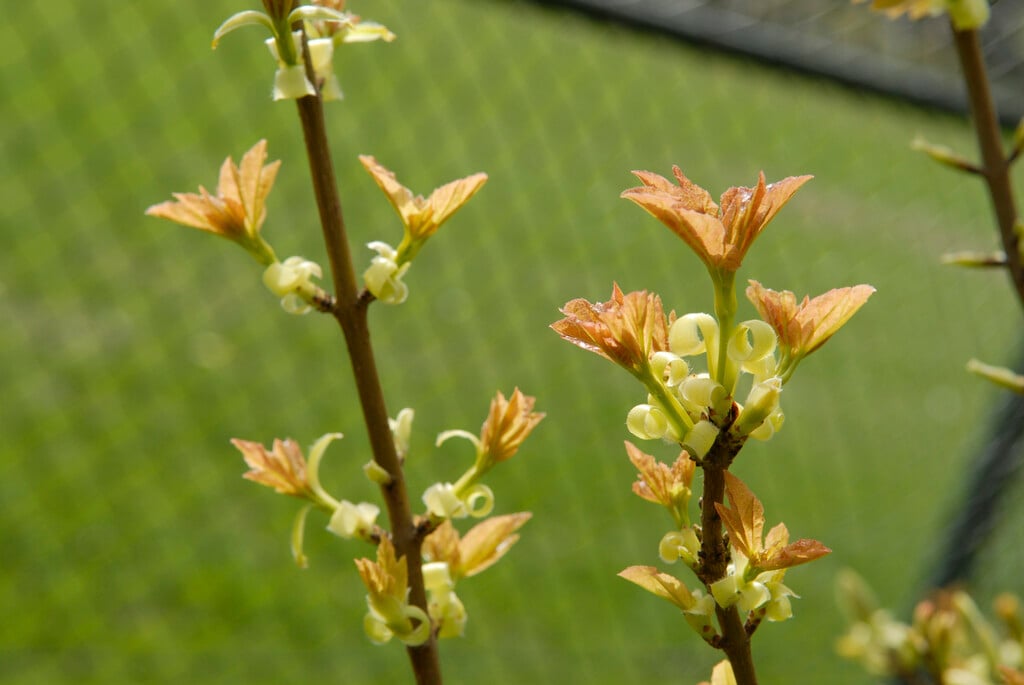Acer obtusifolium
Syrian maple
A semi-evergreen tree, to 8m high or more, with leathery, simple or shallowly 3-lobed, dark green leaves, often curved downwards at the edges. Tassels of small yellow-green flowers are produced in spring, followed by tan-coloured winged seeds that are often flushed with reddish-pink

Size
Ultimate height
8–12 metresTime to ultimate height
10–20 yearsUltimate spread
4–8 metresGrowing conditions
Moisture
Moist but well–drained, Well–drainedpH
Acid, Alkaline, NeutralColour & scent
| Stem | Flower | Foliage | Fruit | |
| Spring | Yellow Green | Green | ||
|---|---|---|---|---|
| Summer | Green | |||
| Autumn | Green | Green Brown Red | ||
| Winter | Green |
Position
- Full sun
- Partial shade
Aspect
East–facing or South–facing or West–facing
Exposure
Exposed or Sheltered Hardiness
H5Botanical details
- Family
- Sapindaceae
- Native to GB / Ireland
- No
- Foliage
- Semi evergreen
- Habit
- Columnar upright
- Genus
Acer can be deciduous trees or large shrubs with paired, often palmately-lobed leaves and small flowers followed by characteristic winged fruits. Many have fine autumn colour, and some have ornamental stems
- Name status
Correct
- Plant range
- Eastern Mediterranean
How to grow
Cultivation
Grow in almost any soil, will tolerate some drought once established. May be deciduous in cold winters
Propagation
Propagate by seed in autumn or spring, or by softwood cuttings in summer
Suggested planting locations and garden types
- Architectural
- Low Maintenance
Pruning
Minimal pruning required; see pruning group 1. Prune from late autumn to mid-winter only
Pests
May be susceptible to Acer gall mite, aphids, caterpillars and horse chestnut scale
Diseases
May be susceptible to Verticillium wilt, Acer leaf scorch and honey fungus
Love gardening
Sign up to receive regular gardening tips, inspiration, offers and more
View our Privacy Policy
Get involved
The Royal Horticultural Society is the UK’s leading gardening charity. We aim to enrich everyone’s life through plants, and make the UK a greener and more beautiful place.